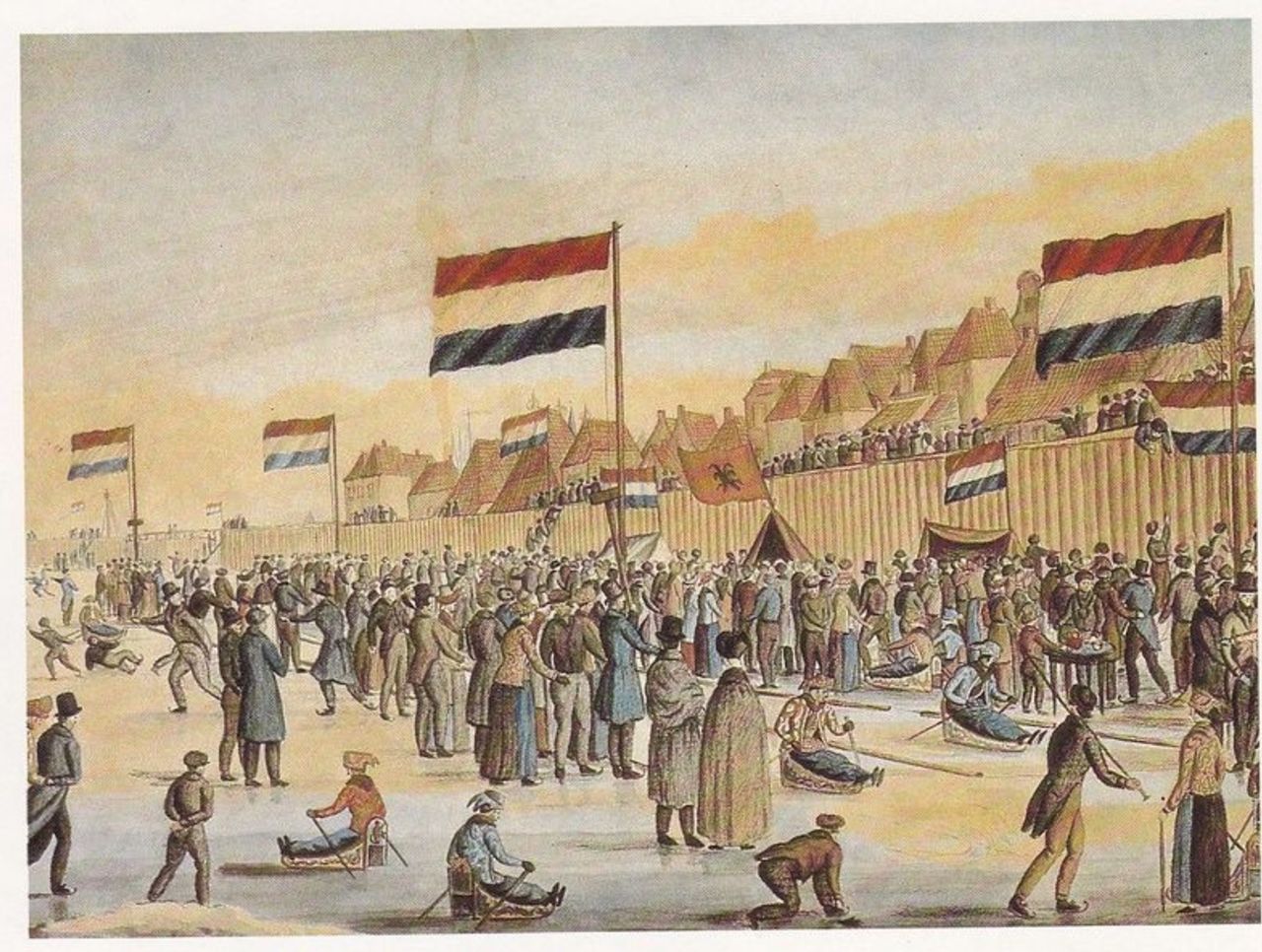Why are the Dutch so good at speed skating?
A story is emerging at the Sochi Winter Olympics, and it's not an altogether unfamiliar one. After two days, the Dutch speed skating contingent have taken four of the six available medals, including both golds.
On Sunday, Ireen Wust won the 3,000m women's competition with a time of just over four minutes. Her victory follows a sweep for the Netherlands in the men's 5,000m on Saturday, led by the best speed skater in the world, Sven Kramer, breaking his own Olympic Record.
To put four medals after two events in proper context, it's worth remembering that the Dutch won more speed skating medals than any other nation four years ago in Vancouver - ascending the podium seven times for 12 events. Four years before that, they won nine medals in Turin, again the most of any participating country.
Update: The Netherlands leave Sochi with 23 speed skating medals (including seven golds) out of a possible 36 (32, if you consider only a single medal up for grabs in the team pursuits). The previous record for the most medals in a single sport at the Winter Olympics was 14 (2006, Austria in alpine skiing).
So, why?
We can explain the general success of Norway or Canada by looking to their cold climate and rugged backgrounds. We can understand why Russia and the United States do well based on the sheer size of their respective populations. But why are the Dutch so dominant in one particular discipline at the Winter Olympics?
Obviously, there's not an easy answer. A nation's sport is often reflective of its culture, and in the Netherlands, it's no different. The thesis of David Winner's Brilliant Orange, published in 2000, is that the advancement of Dutch football is directly linked to the nation's wider culture and history. By discussing Dutch art and architecture in terms of its emphasis on space, and examining soccer as a game for which finding space is vital, Winner makes a convincing case.
There isn't such an obvious comparison when it comes to speed skating. With an average height over 6'1", the Netherlands boasts the tallest adults on the planet. Certainly, having larger strides on an ice surface is beneficial, but it's not enough to fully explain Dutch dominance of the sport.
The nation's geography and topography - and more specifically, its proximity to sea level - fills in some of those gaps.
More than a fifth of the Dutch population lives below sea level, and half of all of the nation's land is less than a meter above sea level. Even the country's name - Nederland - literally means low land.
God created the world but the Dutch created Holland.
As you might imagine, being that close to water makes for soggy conditions. In order to increase trade and expand commercial endeavors during the middle ages, systems of canals, dikes, and polders were built throughout the region we now know as the Netherlands.
Without getting into the history of water-retaining structures in Holland, these have been adapted through time to make the land habitable, so much so that several of the largest Dutch cities are built on water. Extensive canal networks are used to get around in Alkmaar, Amersfoort, Amsterdam, Bolsward, Brielle, Delft, Den Bosch, Dokkum, Dordrecht, Enkhuizen, Franeker, Gouda, Haarlem, Harlingen, Leeuwarden, Leiden, Sneek and Utrecht.
While the climate in the Netherlands is more mild than Northern Germany, Denmark and Scandanavia, it still gets cold enough to freeze the waterways in the country. How does one get around on man-made, frozen tracks of water?
Skating.
Essentially, the land that the Dutch live on is a breeding ground for great skaters. The people of the region have been that way before it was known as the Netherlands, and even before skates. Archaeologists have confirmed the accounts of historians who suggested that bones were added to the shoes of the land's inhabitants a millennium ago.
It's hardly surprising that what was first used as a means of travel, would eventually become a means of fun and competition.

In 1889, the Netherlands organized the very first world championships for skating (and other ice-related activities). Shortly after that the International Skating Union was created, and speed skating became a prominent sporting activity around the world. Eventually, artificial ice would even the playing field somewhat, but skating was ingrained so deeply in Dutch culture that the country quickly adapted, building indoor rinks of their own.
The Dutch knew ice better than anyone, and so, with their understanding of the proper conditions, rinks in the Netherlands were considerably nicer than in other regions. In 1986, the Thialf ice arena was opened in Heerenveen. The climate controlled conditions inside caused almost all of the world speed skating records to broken in its first season of existence.

This increased interest in the sport. In fact, skating proved so popular for spectators that the ISU eventually organised a World Cup circuit - after repeatedly distancing itself from other start up professional leagues - with monetary prizes in the 1990s. Full-time, devoted professional teams developed in the Netherlands, and the country's dominance continues to this day.
Even though the analogy is overused, skating in Holland is something of a perfect storm.
It's a combination of nature, industrial development and culture - and really tall people - all combining to create Sven Kramer, and deliver him to the world. As spectators of the Winter Olympics who enjoy excellence (not to mention fun in the stands of those cheering on their favorite skaters) it's a history for which to be grateful.